May 8, 2017
Tears and Tears

When the tears came, I dried them.
When I couldn't, I tore them off.
There were times when I wouldn't tear the tears.
Instead,
I caught them in little cups like fat from jamón.
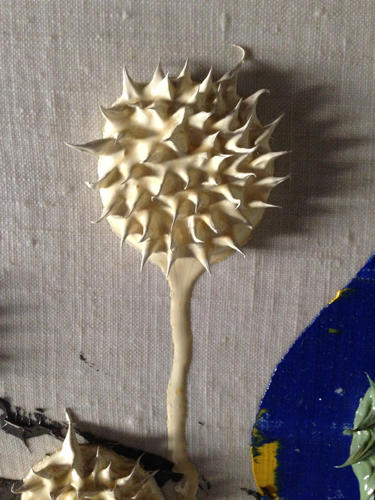
Shortly before I moved to NYC from LA in 2012, I learned that some of my paintings had begun to weep tears of linseed oil. Naturally, this news was tough to bear. Nearly 16 years of painting were in jeopardy. After the initial panic, I girded my loins. I began to address each malfunction as they arose. Over all these years, I have learned that the malfunction is isolated to a titanium white manufactured by Daler Rowney Georgian. The failure is not uniform, not all applications of this pigment have gone wrong.
I have written emails to the manufacturer with no reply. I can only reckon that the problem stems from additives or fillers such as calcium carbonate that ultimately fail to bond in a matrix of linseed oil that did not oxidize properly in that context. If the problem was an improperly processed linseed oil, then I would see the problem arise in other colors, which has not happened. This fact is one that must be emphasized: the problem is not uniform, only a fraction of the malfunction has presented itself, the percentage of which I can only guess to be 30% of paintings that use white in a mass, a yet smaller subset of the whole. I'm relieved to report that in fact, all other colors dry hard and durably. I have seen the development of the problem in titanium white with first a slow tumescence of oil glistening on the surface of paint (the pigment and filler separating from the matrix of oil) and after several years -perhaps five or so- the oil begins to weep tears down the surface of the painting.
Time bombs. A game of whack-a-mole. I have calculated that there are a finite number of moles to whack. Not all masses of white present this problem, and the number of paintings that exploit white in this manner are a limited number. This is my consolation, an armor of determination and fidelity to my body of work as an artist to make things right for my collectors.
Since I paint in impasto rather thickly, the question of drying is usually the first I have to answer when I present my art work. My answer is well rehearsed: they dry from the exterior to the interior with time, the thicker it is, more time must pass. But time passes and they do indeed dry, usually within a couple of years. And since they first become leather dry and then cookie dry later, and all that we experience is the surface, they are functionally dry rather soon for presentation.
I arrived in NYC looking for a solution to the problem, and found one with a local manufacturer of fine art materials in Brooklyn, Robert Doak. Doak grinds his paint with walnut oil. This guy is super old school, a characteristic East Coast dude -a thick Brooklyn accent, a hard seller, craggy face in your face kind of style, a real hard ass with a smile. He sells his product to many established NY artists, big names. I have made my own tests of alternative titanium white formulations now five years old and counting, and I'm reasonably assured that I have ended this particular problem in my painting practice.
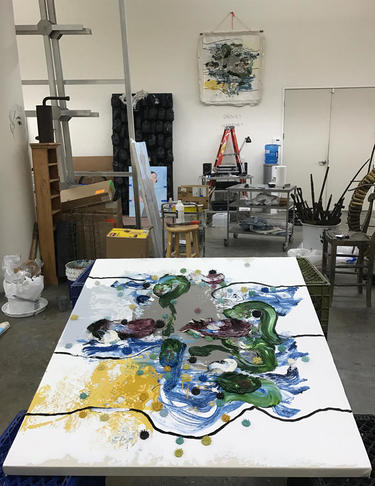
When the time comes to whack the mole, I look for just how extensive the problem is in the painting in question. If it is isolated, such as when the titanium white occurs in highlights of white monads, then the solution is easy. I dry the tears with q-tips soaked in Turpenoid, remove the monad and replace it with better paint. When the use of white is more fundamental, then the solution is more radical: I strip the painting from the support, I re-stretch and repaint the painting. This is an extreme measure that I have performed a handful of times before. The exercise of repainting is interesting, the question of the composition and subject of the painting has already been resolved. The procedure of what was done first, second and third is established history. What is remade is a actually a doppelgänger of what was. And once I have got the feel of the painting in hand, I no longer look to the original and paint only to what is before me. It's like a cloned Einstein, the second Albert is ultimately not the first, but the genes are the same.
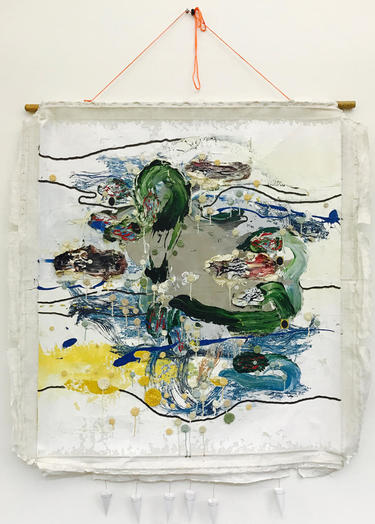
The images immediately above illustrate this story. Last month, I flew to Southern California to repaint "The Ragpicker" (#192) from 2003. The problematic white is within the base of the painting, so it had to be remade entirely. The process is involved but ultimately easy. Since I have usually glued the canvas to the wood panel support, the staples are pried out and the old painting is peeled off with determined energy. The result is violent to the original painting, crushing and mauling the dried impasto. I have found that I tended to like the peeled and skinned painting better than ever. This resembles the kind of painting I am making now, much more shredding and acute formal stress. So I usually hang the scalp of canvas from a rod and suspend it from a wire. The resulting painting inspires me to think of ways to produce such a characteristic result in future work... a problem I am still wrapping my head around. There are several issues to resolve along the way, the solution is yet pending.
Now, I am not a young man anymore. With a sixtieth birthday well under my belt, the illusions of youth are long gone. It's natural in this time of my life to entertain thoughts of what is to happen to my oeuvre after I die. What if I have not had the time to whack all the moles from the pre-2012 paintings? What instruction can I offer to a future conservator?
For a collector of fine art, it's natural to expect that the painting that is bought is the painting that remains reasonably so throughout time. Let's forget about the changing colors in Van Gogh's paintings --they were better for it all, in my opinion... but that was pure chance. And when chance strikes as it did with Duchamp's Large Glass, the change is easier to stomach when the artist who certifies it good was the one who was recently dropping meters of string in an act of Dada. Dada aside, change is inevitable in painting after the fact of its making, the ball is still in motion. Paint contracts ever so subtly when it dries. The features of impasto become slightly ever so acute. I have long accepted the changes that happens relatively quickly in the studio, say, when ivory black tends to perspire very small beads of oil on the surface; or when fine wrinkles develop as one strata of color overlays a more temperamental color below it. I have a favorite painting hanging in my home that has baby fists of temperamental alizarin crimson whose fit of wrinkled skin I enjoy as a marvel.
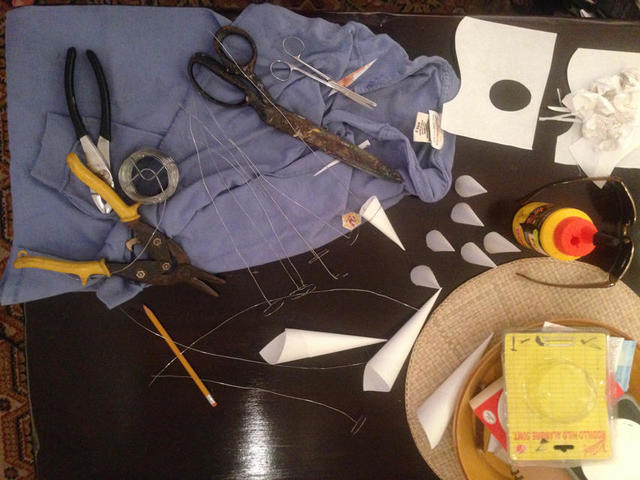
This blogpost is an instruction for the future conservator.
I have in my possession, paintings that weep -not many, maybe three or four- and I rather like them better than before. So for that posthumous moment, I would like to prescribe a solution that I have devised for the lachrymose mole that I have not had the opportunity to whack. In Spain, people hang ham to cure from the ceiling. They attach little cups to catch the fat drippings. Jamón Iberico is so delicious. I have fashioned my own version of the little cups to catch the tears of oil that weep in these particular paintings. Thin gauge wire is twisted into a loop and suspended with a handle that is hot glued to the back of the painting. Palm sized paper cones are fashioned from plastic coated paper palettes material, and fixed into that geometry with PVC adhesive. The cones are tacked behind into the metal hoops with a dab of hot glue and this assembly is positioned in the trajectory of the tears below the painting.
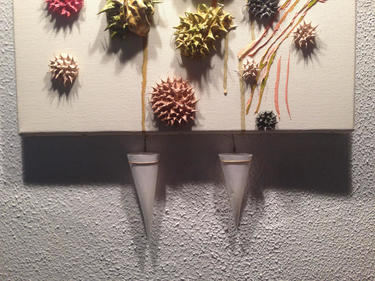
Cry, little paintings. We will catch your tears.
Its ok.
Its ok.
Posted by Dennis at May 8, 2017 10:08 PM
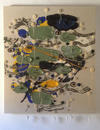

Leave a comment